Lannea edulis var. edulis
Lannea edulis (Sond.) Engl. var. edulis
Family: Anacardiaceae
Common names: grape lannea, wild grape (Eng.); wildedruif (Afr.); umgabunkhomo (isiZulu); mutsambatsi (siSwati); phepo (Setswana).
Introduction
A dwarf shrub, with stubby stems arising from a woody rootstock; it bears large leaves compared to the size of the plant. The fruits are edible, with a juicy pulp that is pleasantly sour.
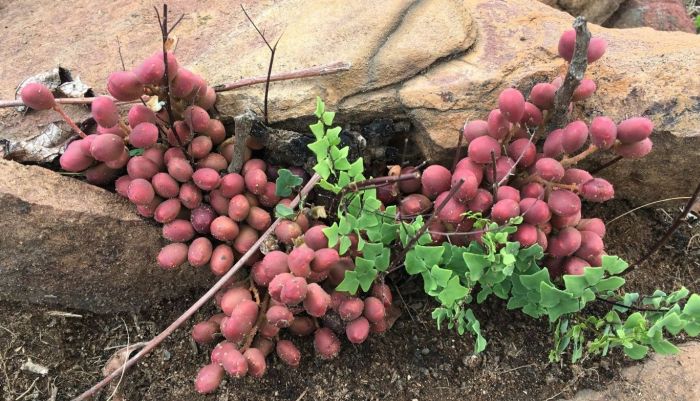
Description
Description
Lannea edulis var. edulis is a small, deciduous shrub that grows 300 to 500 mm tall. The branchlets bearing the leaves, flowers, and fruits, stick up only slightly above the ground and arise from a large, woody, underground rootstock.
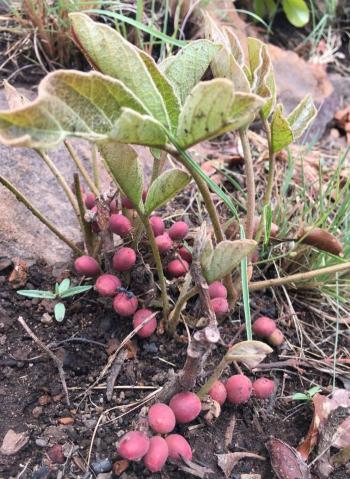
It has shiny green leaves that are hairy when young and leathery when matured. The leaves are compound, up to 300 mm long, with large, broad leaflets. The flowers are white to cream-coloured, crowded on short spikes and are borne at ground level in late winter to spring (August to October), before or with the new leaves. The flowers are followed by bright red, ovoid berries, 11 × 9 × 6 mm, in early summer (October to December). The berries usually show before the leaves appear. They are purple to black when ripe.
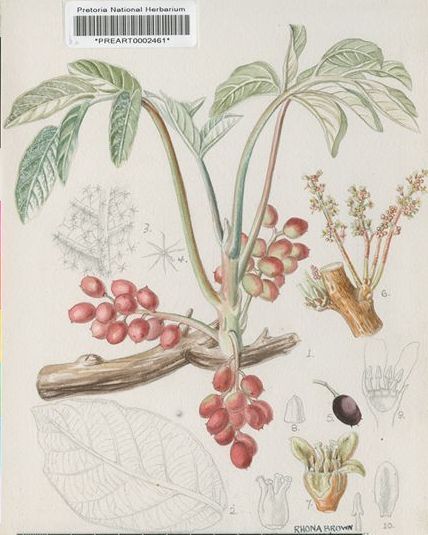
Conservation Status
Status
According to the Red List of South African plants, the conservation status of Lannea edulis var. edulis is Least Concern (LC), which means it is not threatened in the wild.

Distribution and habitat
Distribution description
Lannea edulis var. edulis is not endemic to South Africa; it occurs from South Africa to tropical Africa. It is widely distributed in Gauteng, Mpumalanga, Limpopo, KwaZulu-Natal and North West Provinces, and in the neighbouring countries Botswana, Namibia, Zimbabwe and Mozambique, and in Malawi, Uganda, Angola, DRC, Kenya, Tanzania and Zambia. L. edulis occurs in open, rocky grassland, open woodland, and bushveld and is conspicuous on burnt ground.

Derivation of name and historical aspects
History
The genus name Lannea is derived from the Latin word lana, which means ‘wool’, referring to the densely hairy young plant parts. The species name edulis, means ‘edible’, referring to the berries.
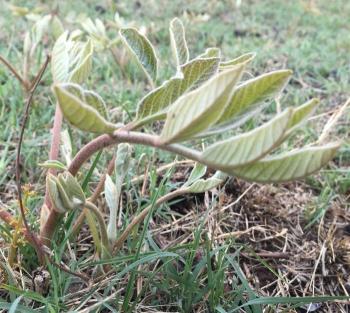
Ecology
Ecology
Lannea edulis var. edulis bears red, fleshy berries that are eaten by mice, birds and humans. At the end of the dry season (winter-spring), bunches of small flowers pop out directly from the leafless stems, each bunch hanging from the bare wood. The berries follow the flowers, in early summer.
The mass of this amazing plant is buried beneath the soil. The plant has a large woody rootstock and a deeply penetrating root system that helps it to survive under drought stress, and to survive fires. L. edulis var. edulis does not develop much above the surface of the soil and this also enables it to escape the frequent fires. This plant resprouts soon after a fire, when it is particularly noticeable.

Uses
Use
Lannea edulis. var. edulis leaves can be used as a medicine to ease child birth, to treat bronchitis, and prevent abortion when it is anticipated. The roots can be taken to treat menstrual pains, bilharzia and gonorrhea. The roots are also used to make baskets. The bark and fruits are taken as treatment of blackwater fever.
The fruits are eaten when ripe, the fleshy pulp is juicy and pleasantly sour, and the skin is discarded.
This plant can be grown as an ornamental in a sunny rockery, as the bright red fruits will provide seasonal colour.
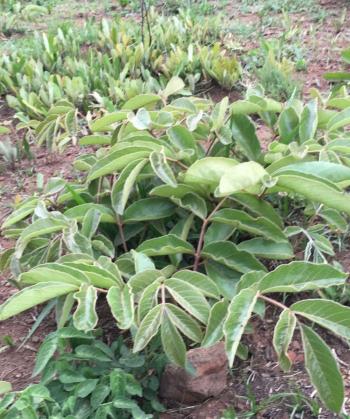
Growing Lannea edulis var. edulis
Grow
Lannea edulis var. edulis can be propagated by seeds. Seeds are sown in spring, in a free draining tray filled with a ¼ of compost and ½ of washed river sand mixture and kept in a dry, ventilated room. Water once a week to promote rooting. Seeds can take 4 to 6 weeks to germinate. Seedlings are transplanted into a pot or bag filled with potting soil and placed in a hardening-off area or a place where they can be gradually exposed to full sun.
Grow Lannea edulis in full sun, in well drained soil with moderate water during its spring-summer growing season. They add seasonal colour to the garden with their bright red fruits in spring to summer.
Credits
Fergy Nkadimeng
Millennium Seed Bank Partnership (MSBP)
July 2019
Acknowledgements: the author thanks Liezille Draper for the use of her images to illustrate this article.
Plant Attributes:
Plant Type: Shrub
SA Distribution: Free State, Gauteng, KwaZulu-Natal, Limpopo, Mpumalanga
Soil type: Loam
Flowering season: Early Summer
PH:
Flower colour: Cream
Aspect: Full Sun
Gardening skill: Easy
Special Features:
Horticultural zones









Rate this article
Article well written and informative
Rate this plant
Is this an interesting plant?
User Comments
Chris Jones, Portugal
July 07, 2019 at 8:15 AMSeveral good clear informative photographs. Very helpful. Thank you.
Login to add your Comment
Back to topNot registered yet? Click here to register.